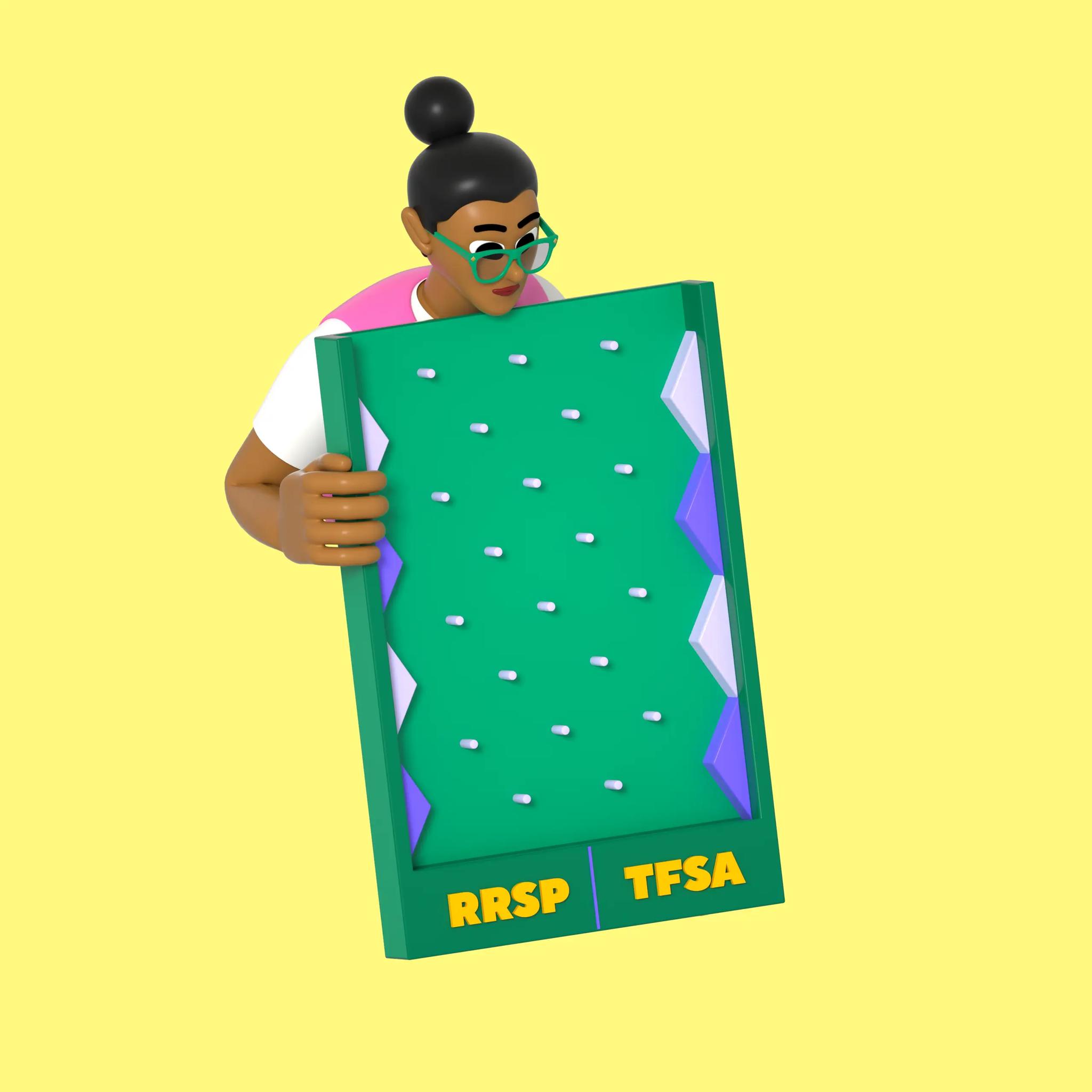Government programs like Canada Pension Plan and Old Age Security provide income in retirement, and while that money is not nothing, it’s also not going to put you on a pink-sanded beach in Eleuthera in January.
The bigger part of the puzzle will be whatever you’ve managed to squirrel away during your working years. While you may have some extra cash in a savings account, GIC, or some taxable investments, most of the liquid assets you’ve saved for retirement will likely be in one of two vehicles: Registered Retirement Savings Plans (RRSPs) and Tax-Free Savings Accounts (TFSAs).
A quick recap on RRSPs and TFSAs
We could write an entire article about each of these accounts (and we have!). But to save you time, here’s a brief guide to what they can do (along with links to those longer stories, if you want to learn more).
RRSPs can hold things like stocks, bonds, mutual funds, exchange-traded funds, and money market funds. Anything you put into an RRSP comes off of your taxable income for the year. So if you earned $85,000 and contributed $15,000 to your RRSP, you’ll be taxed only on $70,000 of income. You’ll eventually be taxed on the money in your account and any gains, but not until you withdraw it in retirement, when presumably you are in a lower tax bracket. There’s an annual cap and a lot more detail to understand, which we get into in our guide to RRSPs.
TFSAs can hold the same assets as RRSPs. They also reduce your taxes, but in a different way: with TFSAs, your contributions are not tax-deductible. But any money in your TFSA — and any gains it accumulates — is never taxed again, no matter when you withdraw it or what you withdraw it for. You can read more about it in our guide to TFSAs.
How much to contribute to each account
If possible, put in as much as you’re allowed every year. The longer that money has to grow, the more there should be when it’s time for you to retire. For many people, however, that is not a possibility. Instead, you’ll need to look at your particular circumstances and choose the account (and the amount) that provides the most benefit in the long run. Here are some tips to help you decide.
When it can be better to contribute to an RRSP
Your income is over $50,000. Since you get to deduct RRSP contributions from your current taxes, the key is making sure your current tax bracket is higher or the same as the one you will be in during retirement. If you’re making under $50K, you are in the lowest federal tax bracket, so there’s nowhere for your taxes to go but up.
You have extra money available. The more money you make, the more likely it’ll be that you have a significant chunk of cash you can put in your RRSP (assuming you have the contribution room).
You want to invest in a lot of foreign stocks. This is particularly true with U.S. stocks. The U.S. Internal Revenue Service doesn’t recognize TFSAs as retirement accounts, which means you will be forced to pay non-resident withholding taxes on any income that comes from U.S. sources. But not if those same assets are held in an RRSP!
You and your spouse/partner have significantly different income levels. The higher-earning partner can put some money in the lower earner’s RRSP to try to equal out their retirement savings, reducing the overall taxes you’ll both pay in retirement. (Here’s a closer look at how it works.)
When it can be better to contribute to a TFSA
Your income is less than $50,000. It’s the opposite of what we said above: if you make under $50K, there’s no way you will be in a lower federal tax bracket later in life, so tax savings now can’t be better than tax savings then.
You want easy access to your money. Unlike an RRSP, a TFSA has no withdrawal rules and no tax consequences when you take money out of the account. No matter when or why you do it.
You don’t want a timeline attached to your account. TFSAs don’t expire. You can use them whenever you want and allow your investments to grow as long as you want. That’s not the case with RRSPs, which are automatically converted into a Retirement Income Fund with mandated withdrawals after you turn 72.
What to do if you’re able to max out both accounts and have money left over
This is a good problem to have, so congratulations. One option is to make sure you’re maximizing contributions to any RESPs (educational savings funds) you’re contributing to, since they also come with tax protection. After that, you may want to consider non-registered investment accounts. Yes, the growth in these accounts is taxable, but the CRA treats dividends and capital gains much more favourably than regular income.
Which account to withdraw from first if you run into an emergency
Ideally you would have built up an emergency fund to help you through any surprise expenses and this scenario will never come up. But if it does, taking money out of an RRSP before retirement has all kinds of strings attached, so it’s almost certainly not going to be worth it unless you have no other options. Instead, use your TFSA. You won’t be taxed on the withdrawal, and you’ll get the contribution room back, allowing you to pay yourself back and stay on track toward your goals.



